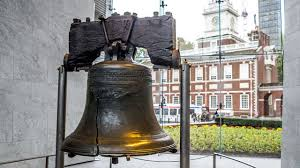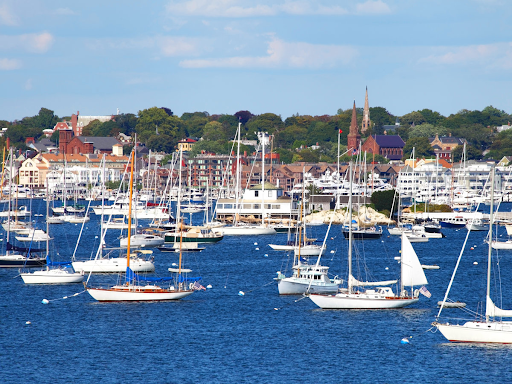Chocolate, Beer and Liberty for All
- Barnabas Travel Blog

- Aug 5, 2020
- 5 min read
Updated: Aug 5, 2020
Week 2

Punxsutawney, PA
To properly fuel ourselves for our week 2 journey, we had a hearty breakfast at Phil’s Groundhog Cafe where the rumor is the pancakes are excellent. On day one, we passed through State College, home of Penn State University, known as one of the top 10 universities in the Big Ten Conference. Taking some time to take in the nothingness that surrounds State College, we then headed southwest headed toward Harrisburg on our way to Gettysburg. On our way, those with superhero eyesight can almost make out Williamsport, home of the Little League World Series.

Gettysburg, PA
Arriving in Gettysburg, we feel the power of this historical site. It was here that the Union Army stopped Confederate general Robert E. Lee's northward thrust at Gettysburg in the battle July 1-3, 1863. It was the Civil War's bloodiest battle and was considered a turning point toward the eventual Confederate defeat. The battle inspired President Lincoln's famous tribute in his Gettysburg Address.

Hershey, PA
On our way to Hershey, we pass through the state capital of Pennsylvania, Harrisburg. Walking into Hershey, our taste buds began to spontaneously water as the tiny town of Hershey is home to The Hershey Company, which makes the well-known Hershey Bar and Hershey's Kisses and is the parent company of the H. B. Reese Candy Company, manufacturer of Reese's Peanut Butter Cups. Hershey's Chocolate World is a factory store and virtual tour ride of The Hershey Company.

Philadelphia, PA
Feeling quite full from our stop in Hershey, we set out for Philadelphia but are overcome by excessive thirst necessitating a stop in Pottsville (not to be confused with Pottstown), PA, home of D.G. Yuengling & Son, "America's oldest brewery", brewing beer since 1829. Our thirst satiated, we pass through Valley Forge, where George Washington and his Continental soldiers famously spent a bitter winter at Valley Forge in 1777-78 while the British had occupied nearby Philadelphia during the Revolutionary War. Speaking of the Revolutionary War, on to Philadelphia, where the American Revolution officially began with the signing of the Declaration of Independence in 1776. Philadelphia is one of the oldest municipalities in the United States. William Penn, an English Quaker, founded the city in 1682 to serve as capital of the Pennsylvania Colony. Philadelphia played an instrumental role in the American Revolution as a meeting place for the Founding Fathers of the United States, who signed the Declaration of Independence in 1776 at the Second Continental Congress, and the Constitution at the Philadelphia Convention of 1787. Several other key events occurred in Philadelphia during the Revolutionary War including the First Continental Congress, the preservation of the Liberty Bell, the Battle of Germantown, and the Siege of Fort Mifflin. The city was also one of the nation's capitals during the revolution, serving as a temporary U.S. capital while Washington, D.C. was under construction. Leaving Philadelphia, we cross the Benjamin Franklin Bridge which takes us into New Jersey.
New Jersey, not surprisingly,is rather uneventful and the group is focused on getting to the Big Apple, New York City. In New Jersey, we do pass through Burlington, home to St. Mary’s, the 4th oldest Episcopal Church in the United States and the oldest church in all of New Jersey, which was founded in 1703.

New York, NY
With an estimated population of 8 million people distributed over about 300 square miles New York City is also the most densely populated major city in the United States. New York City has been described (mainly by New Yorkers) as the cultural, financial, and media capital of the world, significantly influencing commerce, entertainment, research, technology, education, politics, tourism, art, fashion, and sports. Home to the headquarters of the United Nations, New York is also an important center for international diplomacy.
We try to take in as many sights as we can handle from the Statue of Liberty to the Empire State Building (we choose to take the stairs) to the sombering site of 9/11. We try some New York style pizza, but the majority of the group prefers Dewey’s. A stroll through Times Square and Central Park and we are on our way to the Cathedral of St. John the Divine.
St. John's (known by some as St. John the Unfinished) is the cathedral of the Episcopal Diocese of New York. The cathedral is an unfinished building, with only 2⁄3 of the proposed building completed, due to several major stylistic changes and work interruptions. The original design, in the Byzantine Revival and Romanesque Revival styles, began construction in 1892. After the opening of the crossing in 1909, the overall plan was changed to a Gothic Revival design. The completion of the nave was delayed until 1941 due to various funding shortfalls, and little progress has occurred since then, except for an addition to the tower at the nave's southwest corner. After a large fire damaged part of the cathedral in 2001, it was renovated and rededicated in 2008. The towers above the western facade, as well as the southern transept and a proposed steeple above the crossing, have not been completed. Despite being incomplete, the Cathedral of St. John the Divine is the world's sixth-largest church by area and either the largest or second-largest Anglican cathedral. The peace and beauty of St. John’s provided a much needed respite from chaos of the city before we head north to Connecticut and on to Rhode Island.

Newport, RI
Newport was founded in 1639 on Aquidneck Island, which was called Rhode Island at the time. The Colony of Rhode Island and Providence Plantations received its royal charter in 1663, and Benedict Arnold was elected as its first governor at Newport.
Newport has one of the highest concentrations of colonial homes in the nation in the downtown Newport Historic District, one of three National Historic Landmark Districts in the city. In addition to the colonial architecture, the city is known for its Gilded Age mansions, summer "cottages" built in varying styles copied from the royal palaces of Europe which provided “summer” homes for the likes of the Vanderbilts.

Plymouth, MA
After 729 miles this week, we land in Plymouth, Massachusetts where the Pilgrims landed in 1620. Named after Plymouth, England from where the Mayflower set sail, Plymouth is also the site of the first Thanksgiving Feast.
Collectively, we covered 729 miles this week and had almost 40 people submit mileage! That’s fantastic...and it also allowed us to take a few suggested detours to take in more sights. While these detours have added to the total miles we’ll need to cover to get to Bethlehem, we’re still on track to make it by Christmas. At this pace, we are on track to get to Bethlehem by Christmas. This week, we’ll be walking through Massachusetts, New Hampshire and Maine. We’ll likely also make our first border crossing as we head into New Brunswick, Canada. If any of our participants has some fun facts for this section of our journey, please email them to Colleen at cdavies67@gmail.com. Let’s keep it up and encourage other members to join us!
.jpeg)


Comments